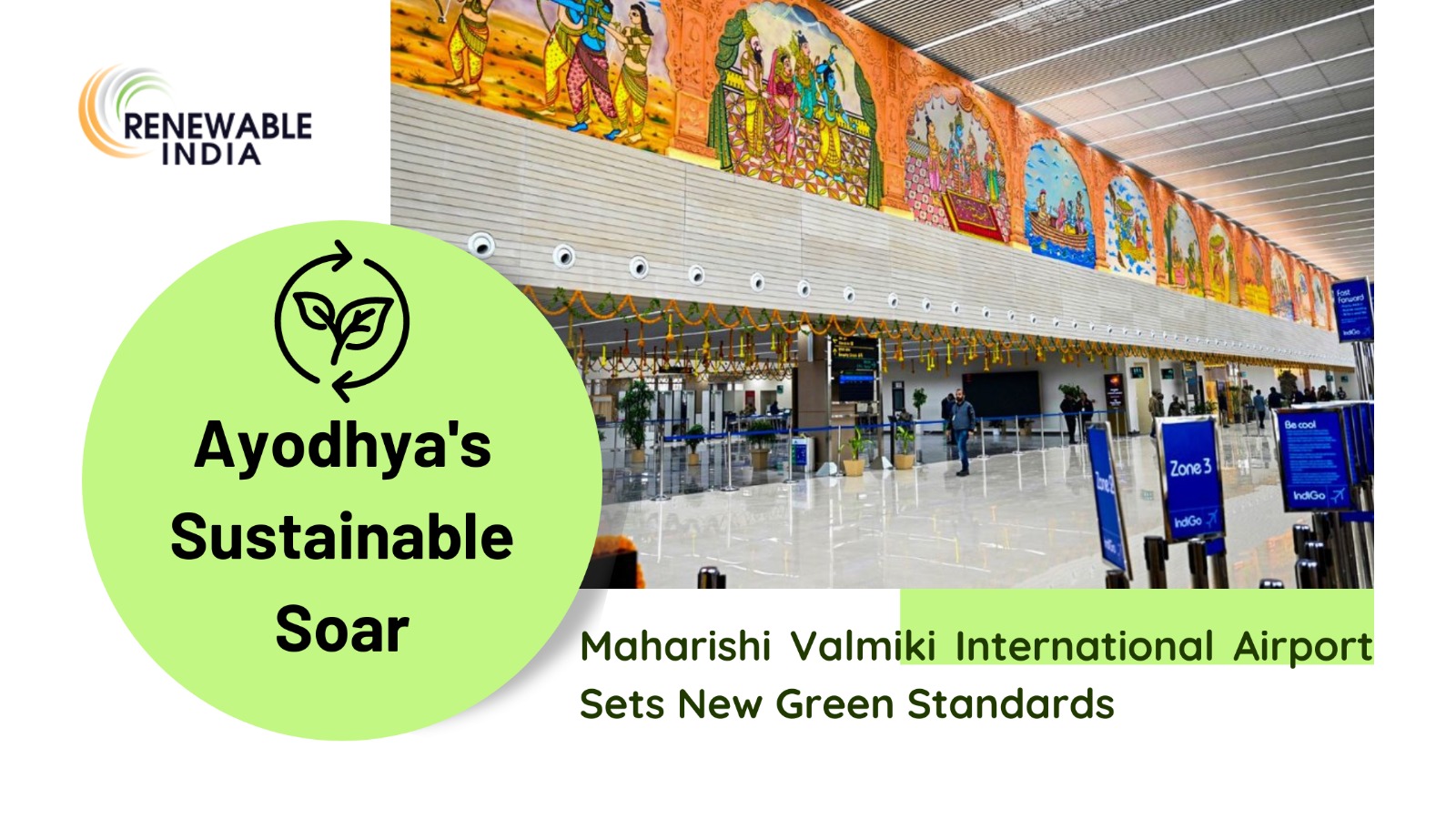
In a historic move, Prime Minister Narendra Modi inaugurated a transformative phase for Ayodhya, marking the unveiling of the Maharishi Valmiki International Airport. This state-of-the-art facility, built at a staggering cost of over Rs 1450 crore, promises not just enhanced connectivity but also showcases a commitment to sustainable practices, setting it apart on the aviation landscape.
Situated at the heart of Ayodhya, the airport is more than just a transit point. It stands as a symbol of progress, connectivity, and sustainability. It represents development, interconnectedness, and sustainability. The first phase is a monument to the government’s aim for the comprehensive development of Ayodhya and its surrounding territories, with its stately terminal building measuring 6500 sqm.
What sets Maharishi Valmiki International Airport apart is its dedication to sustainability. The terminal building, designed as a green structure, incorporates an insulated roofing system, LED lighting, and rainwater harvesting facilities. The commitment to a green approach doesn’t end there – a water treatment plant, sewage treatment plant, and a solar power plant contribute to the airport achieving a GRIHA 5-star rating.
Built in partnership with the Uttar Pradesh government, the airport has a 2200-meter runway that can accommodate aircraft of the A-321 class. This not only provides better connectivity for the area, but it also creates prospects for employment, business, and tourism. The airport has a Ground Support Equipment (GSE) area, two link taxiways, and an apron that can accommodate eight aircraft of the A-321 type.
With nine check-in desks, three conveyor belts, and five X-BIS machines, the Ayodhya Airport is dedicated to provide travellers a smooth travel experience. The efficient design of the passenger amenities guarantees a seamless passenger flow through the airport.
Aside from its practical features, the airport’s exterior depicts the cultural and spiritual importance of Ayodhya by exquisitely mirroring the architectural magnificence of the Shri Ram Mandir. The terminal building’s interiors are decorated with murals, paintings, and other works of local art, resulting in a tasteful fusion of contemporary technology and classic design.
In the long run, the second stage of construction should improve the airport’s capabilities even more. This extension is expected to service 4,000 passengers during peak hours and an astounding 60 lakh passengers annually with a vast new terminal spanning 50,000 sqm. To handle the increasing air traffic, the design calls for an extended apron, a parallel taxi track, and an extension of the runway.
The creation of the Ayodhya Airport, which is a part of a regional effort worth Rs 11,100 crore, represents more than just advancements in infrastructure. It stimulates trade, employment, and tourism, all of which contribute to economic prosperity. Ayodhya is positioned as a potential destination for both business and leisure travellers due to its advantageous location and contemporary amenities of the airport.
As the Maharishi Valmiki International Airport takes flight, it marks a transformative chapter for Ayodhya. Beyond being a hub for travel, it stands as a beacon of sustainable development, cultural integration, and economic prosperity. Ayodhya, with its new airport, is not just on the map; it’s soaring to new heights, symbolising the dynamic and sustainable future of Indian aviation.
Leave a Reply